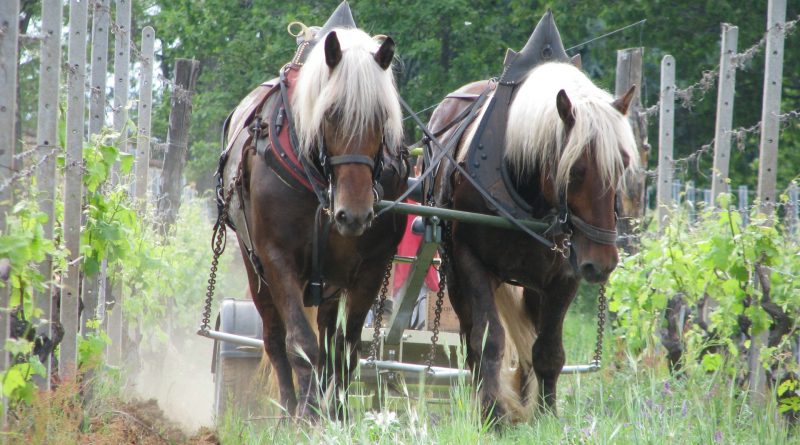Agriculture: Return to animal traction
Agriculture: Return to animal traction
Talking about animal traction in agriculture seems anachronistic and, as usual, it would seem to be possible to deride the derision of the usual modernists.
Animal traction in agriculture is clearly not a novelty. Indeed, before the mechanization of agriculture was the only and precious medium the peasants were relying on. Paradoxically today it is proposed as an alternative to its economy and efficiency. Animal traction, ie the reintroduction of animals (donkeys, horses, mules) into working in the fields is the new frontier of an agricultural world that, gradually abandoning the illusions of an unpopular rural type of industrial model, is returning to the ancient but with the knowledge and modern technology.
The same Jeremy Rifkin in his work: Entropy, states the following: Energetically … “a farmer with a bull and a plow gets better yields in terms of spending energy than the gigantic mechanized farms of America of our times” ….
To read this statement and all those contained in the chapter on agriculture in this very interesting book, it is understood how little orthodox has been much of the agricultural mechanization.
It is clear that we are not criminalizing agricultural mechanization, but we want to analyze it critically and to evaluate where it is possible, as time goes by more and more in the world, the return of traction animals that do not only perform mechanical but also ecological functions.
That animal traction is economical and efficient, and above all, it is not “zero”, but positive, but it is not supported by Jeremy Rifkin, but many farmers are already convinced that they are experimenting with and re-elaborating this technique.
It is clear that this reintroduction will have to involve again a new class of peasants, blacksmiths, saddlebags, blacksmiths, college students, and so many “newbies” who look with renewed interest in this possibility.
The return of equidae (or oxen) is becoming increasingly necessary for the following reasons:
- Increase in production costs;
- Decline in profitability and the impact of the costs of maintaining agricultural machinery in the peasant farm balance;
- More versatility of animals than today’s perhaps too advanced technologies for small and medium-sized businesses;
- Excessive decrease in organic matter in farms no longer compensated by the presence of farm animals.
In Italy, animal traction was still in use up to half a century ago. Suffice it to think that in Piedmont the field measurement unit is the “day”, that is, the area an animal was able to work over a working day, just to say that ancient wisdom still permeates modern vocabulary. While in Italy there has been a total abandonment of this practice, in France there has been an evolution of tools that are, today, technologically avant-garde and are opening new scenarios until a few years ago unthinkable. A possible evolution, therefore, for all those who want to evolve their work in the company intelligently.
On the other hand, today the four points mentioned above, the maintenance costs of a soma animal are not comparable to those of maintaining an agricultural means (fuel, maintenance, tire change and daily prayer that does not fail if the means they are no longer new). Efficiency is guaranteed and even greater in terms of energy (just do a small thermodynamic calculation to understand its meaning.
But not just, as mentioned, to benefit from the use of animals is the same land. The chemical-physical composition of the soil changes in a better way over a very few years. For example, in addition to organic matter, especially in vineyards, the tractor always runs at the same point, whether it is rubberized or crawled. The soil is then constipated, preventing oxygen replacement and the work of microorganisms, gradually impoverishing it. On the contrary, a vineyard whose soil is worked by animals needs less treatments because it is stronger. Here is how to create a virtuous coat between animal, soil and plant.
Now the word has to go to the Universities that if they want to get out of the trouble imposed by stupid and insensitive policies on Research can find really new virtuous roots.
Guido Bissanti

